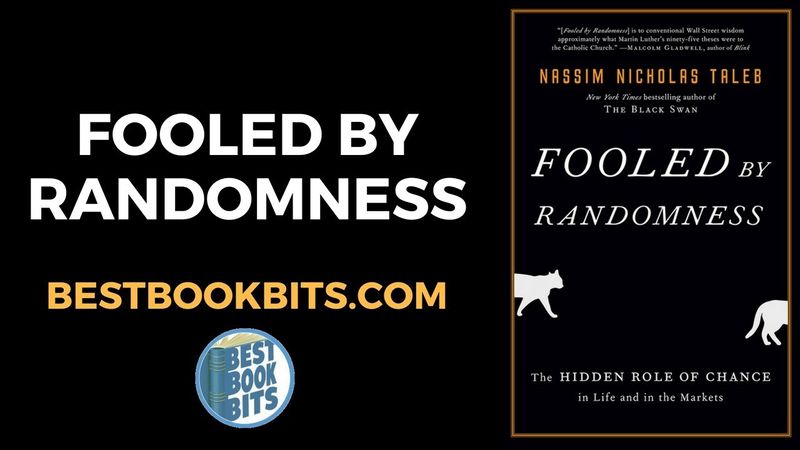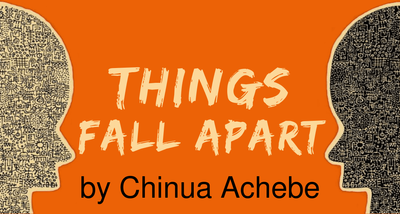A Critic's Meta Review: 4/5
Fooled by Randomness: The Hidden Role of Chance in Life and in the Markets (2001) explains how humans routinely underestimate the role luck plays in determining outcomes. This failure to account for uncertainty can lead someone to attribute meaning to a result where none exists, or to overlook the probability of a rare but cataclysmic event. Author and former stock trader Nassim Nicholas Taleb argues that humans did not evolve with the inherent ability to correctly weigh probabilities when making decisions. Humans are also incapable of intuitively interpreting the likelihood of a given result when considering a scenario with multiple potential outcomes. Since people are not naturally adept at probability, they are prone to fallacious reasoning when it comes to making decisions, predicting the future, or explaining a past or present event. For example, journalists and other commentators frequently attribute skill to wealthy investors who manage to pick a wildly profitable stock. In truth, the investor’s winnings may reflect good luck rather than keen insight. The widespread inability to understand probability and uncertainty affects more than how society measures success among investors. For the average person, learning about probability and uncertainty can lead to a better understanding of how social status is formed, why experts make mistakes, and why biases can lead to a faulty interpretation of the facts.
When assessing humanity’s potential, a philosopher’s viewpoint generally falls into one of two categories. The first, called the Utopian Vision, holds that people can use reason to overcome superstition and harmful instincts; this view is unrealistic. The second, called the Tragic Vision, submits that no progress can be made without the acknowledgement that humans are inherently prone to illogical thought and behavior. The Tragic Vision provides a better explanation for common missteps in situations involving probability and uncertainty. Since humans cannot overcome their propensity to commit fallacies, they must use other methods to mitigate superstition and faulty reasoning.
One such method is the consideration of alternative histories, or events that did not take place but could have if some aspect of the situation had been changed. Imagining alternative histories is difficult, because it requires humans to deviate from their natural inclination toward linear thought. By imagining how a scenario could have unfolded differently, however, a person can gain a better idea of whether a given decision was the best choice among all identifiable options.
This report uses the second edition of Fooled by Randomness. Released in 2004, it includes expanded versions of most of the original chapters. The eleventh chapter contains the most extensive revisions.
The value of a decision should be judged not on its outcome, but on whether it was the best possible choice at the time.
If a stock skyrockets in value, market analysts and commentators often argue that buying was the right decision. Likewise, when a stock plummets in value, they claim that its backers made a mistake. Whether buying the stock was a good decision or not, however, is independent of its future performance in the market. A decision’s merit is determined by whether the choice was the best one given the information available at the time, not based on the information available after the outcome becomes clear. If people use data obtained at a later date to judge a decision, then their statements are likely affected by hindsight bias, or the tendency to assume current information was available and widely known at the time the choice was made.
Outcome bias refers to humanity’s natural tendency to conflate results with the quality of a decision. Executives who do not attempt to mitigate outcome bias can hurt their company’s ability to improve and adapt. For example, a company that puts too much emphasis on outcomes will be more likely to promote employees who lack talent, while firing workers whose good decision-making skills are obscured by a poor outcome. Businesses may also struggle to ensure that a new hire will live up to expectations. When judging scenarios in which one person receives a bad result while holding good intentions and the second person receives a good result while holding bad intentions, individuals are more likely to venerate those who received the favorable outcome. Since results skew humanity’s ability to correctly interpret current events and future probabilities, businesses should find ways to remove outcomes from the decision-making process. Panels who judge job candidates should be presented with the candidates’ decision and the reasoning they used to reach that course of action, but they should not be given the result. If deprived of an applicant’s outcome, the deciding panel will be incapable of favoring one candidate over another simply because that candidate’s path proved to be more profitable in the end. These panels are also more likely to weigh a candidate’s past decisions and their merits when considering future potential, instead of relying on stereotypes or spurious correlations to choose the best applicant. By granting promotions based on decision-making ability, rather than outcome, a company can ensure that its most talented members are not unnecessarily ousted by random or rare flukes.
Failure to account for an unexpected outcome can have greater consequences than the outcome itself.
When determining the average of a given set of values, statisticians often remove the outliers, or those numbers that fall well outside the normal range and therefore skew the results. That practice is useful in statistics but can be disastrous in other occupations, particularly professions where chance plays a heavy hand in determining success. A stock trader who ignores outlying events, also known as black swans, is likely to miss the probability of a future crash, or mistake an investing fad for a long-term opportunity. Rare events may be unlikely, but they must be accounted for.
Discounting the likelihood of an unexpected outcome can also cause a person to incorrectly interpret its cause. That false interpretation can lead to the creation of bad policies or the abolishment of good ones. In the 1990s, violent crime in the United States dropped significantly, despite expert assertions that it would rise in that decade. While criminologists credited the decrease in crime solely to improvements in policing and gun control, the drop in criminal activity could better be explained by an event that took place two decades prior. In Freakonomics (2005), authors Steven D. Levitt and Stephen J. Dubner explain that the new wave of criminal activity predicted by experts was thwarted by the increase in abortion access after Roe v. Wade was decided in 1973. Women who were likely to remain socioeconomically unstable were suddenly granted the ability to more easily choose whether they wanted to become mothers. Those women, had they had children, would have been more likely to raise their offspring in impoverished environments with high rates of illegal activity, thus heightening the probability that those children would be disposed to commit crimes in the future. The failure to recognize how abortion has decreased crime throughout American society has led some politicians to dismiss the impact of easy access to pregnancy termination on the greater society’s well being. Legislators who seek to limit abortion access are not accounting for the likelihood that fewer abortions may lead to an increase in crime. By failing to account for this unexpected outcome of abortion access, legislators risk creating the poor social conditions that lead to higher crime rates.
A concept that endures for a long time is more likely to resemble the truth.
When a concept is first introduced to an audience, it’s not always apparent how important, accurate, or practical it is. At first, there is an abundance of available data that is irrelevant to whatever question is being considered; that irrelevant data can be considered noise that obscures the accurate interpretation of presently available information. Over time, noise tends to be stripped from a concept, leaving only the information that holds true in the majority of cases. Concepts that have endured for decades or even centuries tend to be more reliable than new theories, since they have had more time to be weighed and tested by wider society.
In The Right Side of History (2019), political pundit Ben Shapiro argues that Athenian logic and Judeo-Christian values, both centuries-old concepts, have proven themselves to be so useful over the years that they have become indispensable for the health of Western democracy. Both concepts, he argues, were refined over the course of several generations by philosophers, politicians, and academics who recognized that reason, when tempered with morality, could create a more equal society. Athenian logic gave early thinkers the structure they needed to separate conjecture from observable fact; Judeo-Christian beliefs instilled personal responsibility, which made it easier to hold people accountable for their actions. Shapiro argues that the precepts underlying these two influencing ideologies still hold true today, and that their continued endurance is necessary for a free society. He also asserts, however, that when a fundamental truth has persisted for long enough, its importance can become obscured by newer, competing theories. Those who do not recognize the importance of Athenian reasoning and Judeo-Christian values might be tempted to dismiss both in favor of new opinions. While older concepts tend to hold more truth, that truth may not always be immediately evident to younger generations. Older, more experienced experts may have to assert statements they believe to be self-evident if they want history’s lessons to remain apparent to younger members of society.
Key Insight 4
In professions that are vulnerable to frequent and arbitrary change, successful employees often demonstrate the qualities that best fit current conditions.
Otherwise untalented employees can seem impressive if they have been lucky enough to land in an environment that suits their skills and inclinations. This tendency to conflate skill and compatibility with a given environment is called the cross-sectional problem. In situations where good fortune has allowed employees to rapidly rise through a company’s ranks, those workers may start believing that they are superior to lower ranking coworkers. The tendency to judge performance based on ability to make it through several rounds of selection is called survivorship bias. Due to survivorship bias, employees with a good track record may underestimate the role chance has played in their achievements and in the achievements of those around them.
In some cases, the factor that provides an individual with a situational advantage can also lead to situational disadvantage. Such is the case for investors inclined to place their faith in emerging technologies. Those who test out new concepts and commodities may be more likely to suffer if those developments prove to be temporary, but they also are more likely to profit if the emerging technology takes off. For example, technology enthusiasts who became interested in cryptocurrencies, like Bitcoin, when they were first developed in 2009 stood a higher chance of profiting from the pre-2017 boom than those who decided to approach decentralized digital tender more cautiously. In Cryptoassets (2017), authors Chris Burniske and Jack Tatar explain that the first people to mine cryptoasset coins and further develop blockchain systems were technology enthusiasts who distrusted centralized governments. These individuals were more likely to treat the process of procuring cryptoassets like a job in and of itself, allowing them to accrue vast quantities of their chosen currencies before those online coins had increased in value. However, these cryptoasset miners needed to recognize that the rising valuation of Bitcoin and other digital assets was based on nothing but speculation. The same traits that gave early Bitcoin adopters a potential advantage, like their love of and belief in technology, also predisposed them to stick to their belief in decentralized digital currency, regardless of whether a cryptocurrency remained a profitable investment in the long term. If people experience a string of successes because of personal interests or character traits, there’s no guarantee that those same traits won’t later prove to be their downfall.
Experts can easily confuse the median outcome for the average result.
Humans have a tendency to treat outcomes as if they all have equal probability of occurring. This bias likely occurs because most children are taught probability through methods like the coin toss, where the median result and the average result are the same. Outcomes, however, do not usually have equal probabilities. A median number of stock investors could make a 10 percent profit on their portfolios while the average investor only makes 3 percent; the discrepancy can be explained by the existence of outlying investors who profit by 30 percent annually, thereby skewing the average results.
Since a sizeable portion of the population doesn’t understand the difference between the median and the average, to the point of sometimes considering the two to be synonymous, politicians and other officials can use the population’s general lack of mathematical understanding to make accurate, but spurious, claims. In North Carolina, a string of 2019 protests aimed at raising teacher salaries and benefits led the state’s superintendent, Mark Johnson, to email a letter to parents and school officials which claimed to explain why teacher compensation in North Carolina is adequate, if not potentially better than other careers available in the state. In the letter, Johnson compares the median salary a teacher receives annually to the median annual household income in the state. While he is correct in asserting that the median teacher salary is higher, his comparison is not exactly accurate. Teachers normally have to obtain additional training to retain certification and find positions in schools; many have master’s degrees, or even doctorates. By comparison, the general working population of North Carolina includes unskilled laborers and part-timers who work for the federal minimum wage, as well as those whose salaries far outpace teachers because they have chosen a more lucrative profession. The median number provided by Johnson also does not tell whether the distribution of teacher salaries is even, or whether disproportionally high or low numbers have affected that middle variable. Parents receiving Johnson’s letter thus might be basing their opinion of the teachers’ demands on misleading information.
Information cannot be used to confirm a hypothesis; it can only be used to disprove one.
Hypotheses are generally testable assertions based on past data. The past, however, does not always indicate what will happen in the future. Due to the fact that the future can contain unforeseen factors and outcomes, presently available information can only be used to debunk false hypotheses; it cannot be used to prove that a hypothesis will hold true for all of eternity. A market analyst can use data, for example, to disprove the idea that stock options are always bad investments. But the analyst cannot use data to prove that stock options are always the best portfolio choice.
The fact that information can only be used to disprove or revise hypotheses is reflected in how scientific theories are constructed. Scientific theories are hypotheses that are backed by so much evidence that scientists believe them to be generally, if not universally, true. The theories in question can be tested by numerous people in multiple locations under differing conditions and still produce results that are consistent with the underlying hypotheses. However, regardless of how much supporting evidence a scientific theory accumulates, the scientific community continues to refer to it as a theory; a single contradicting experiment could debunk the theory so long as the debunking experiment could be repeated by multiple scientists with the same results. Even scientific theories that have been used as guiding principles for decades can be challenged by a single strong hypothesis. As Stephen Hawking explains in his posthumously published book, Brief Answers to the Big Questions (2018), Albert Einstein’s theory of general relativity was originally created under the belief that if someone knew all the positions and all the speeds of all particles in the universe, one could predict their past and future behavior. This assertion was made before Werner Heisenberg came up with the uncertainty principle, which holds that if you know a particle’s speed, you cannot know its exact position. The reverse holds true as well. Scientists haven’t found an explanation for how the uncertainty principle and Einstein’s theory of general relativity could be true simultaneously. It’s possible that future physicists may end up revising or scrapping Einstein’s theory altogether as more information is discovered.
Without emotion, it would be impossible to quickly make decisions and weigh probabilities.
Since emotion can lead to poor decision-making, some believe that humans would be better off if they could divorce feelings from rational thought. If that were possible, however, people would be incapable of making the quick judgments necessary for navigating everyday life. Without emotion, it becomes impossible to judge preference between two options with equal probabilities of occurring. Emotions are necessary to the decision-making process, even if they sometimes cause people to act illogically.
Emotion may be a necessary component of making a decision, but it is not a perfect tool. Different emotions can lead people to fall into different fallacies. For example, researchers have found that anger tends to stimulate action, but also causes people to simplify situations, discount potential dangers, and give in to bigoted stereotypes. Happiness, on the other hand, can cause someone to accept a deal because they are enamored with the person offering it, not because the bargain is a profitable one. People who are predisposed to depression and melancholy may be better at using emotions to navigate choices, but they can quickly become paralyzed by the need to endlessly weigh and compare options. When making an important decision, a person should acknowledge that emotions will inevitably play a role, but should find a way to evaluate the decision in a neutral, objective fashion. A rubric, for example, might help a group of college students decide which apartment to live in by assigning values based on price, number of bedrooms, square footage, and location. The objective facts about the apartment can then be combined with subjective feelings about the place, which may make it easier for the group to come to a logical but still emotionally satisfying decision.
Constant access to information can skew someone’s ability to correctly weigh probable outcomes.
Professionals often assume that access to an increased amount of constantly updated information will lead to better decision-making. However, it’s difficult to spot larger trends when one is focused on minute, day-to-day variations. Larger trends are often more indicative of future outcomes than short-term changes. If people want to decrease the chance of bias influencing decisions, they should decrease how frequently they seek out new information.
The bombardment of new information that most people experience simply by watching or reading the news increased exponentially with the advent of the internet. In The World Is Flat 3.0 (2007), New York Times columnist Thomas L. Friedman explains that the internet, combined with the spread of fiber optic cables and other technological improvements, made it so that anyone could publish information online for free, regardless of their journalistic experience. The rise in independent publishers led to the proliferation of online blogs, and later to the creation of digital publications that compete with more traditional print and broadcast outlets. While some of these online outlets have exacting editorial standards and ensure the accuracy of the information they publish, others are little more than online tabloids, containing more speculation and gossip than verified fact. Average news consumers, who may not be familiar with journalistic standards, are left to judge the veracity of each blog or website for themselves. The internet has in many ways been a boon to the spread of information. It has also, however, resulted in the spread of disinformation, led to increased political polarization, and decreased trust in journalists overall. Just as investors should limit how much day-to-day stock information they take in from national sources, readers should avoid relying primarily on small, independent websites for the bulk of their news. If a report is accurate and consequential, it will likely be verified by a local or national news outlet; even then, readers should be aware that the explanation of a given event may change as further information comes to light.






